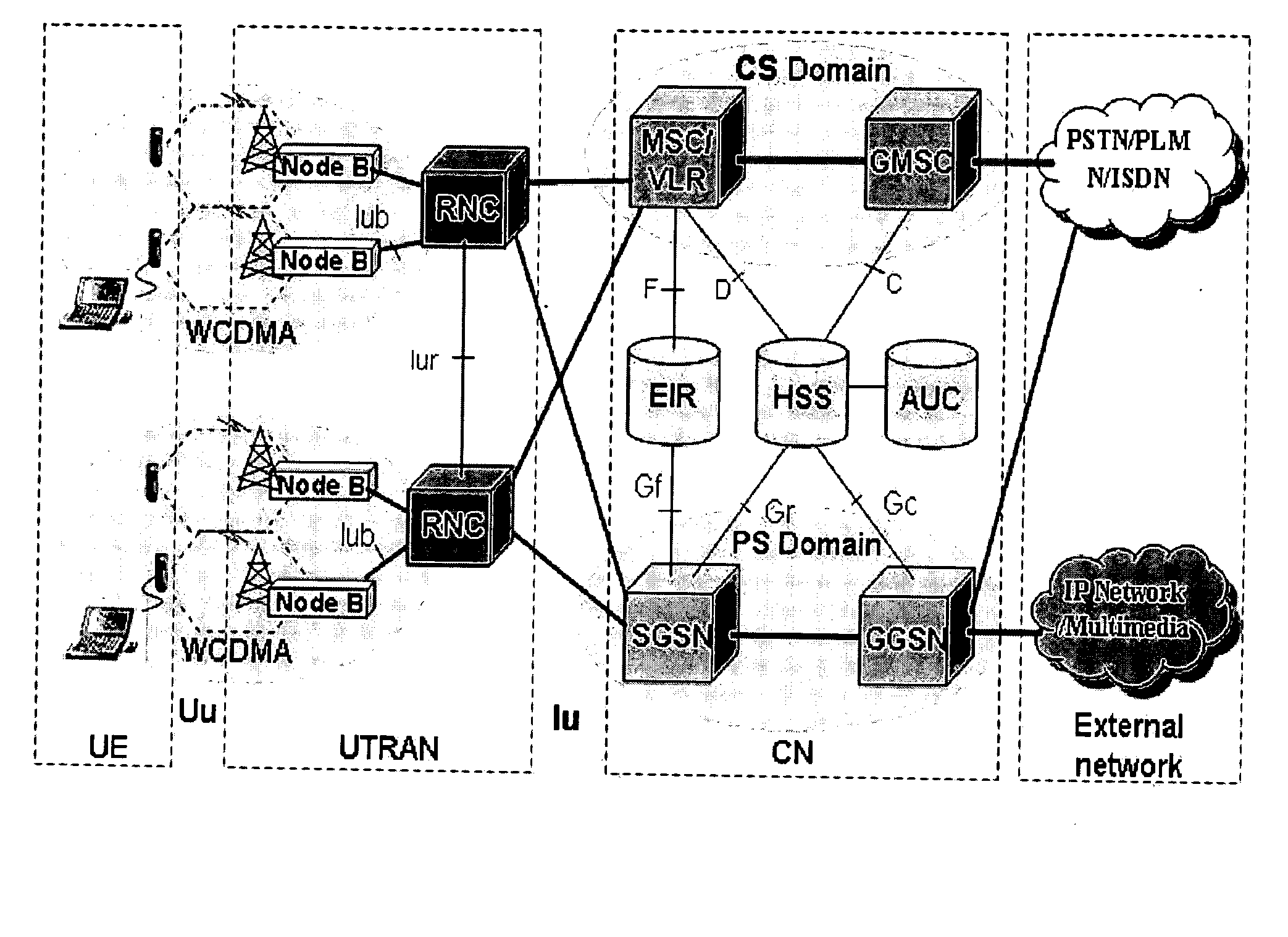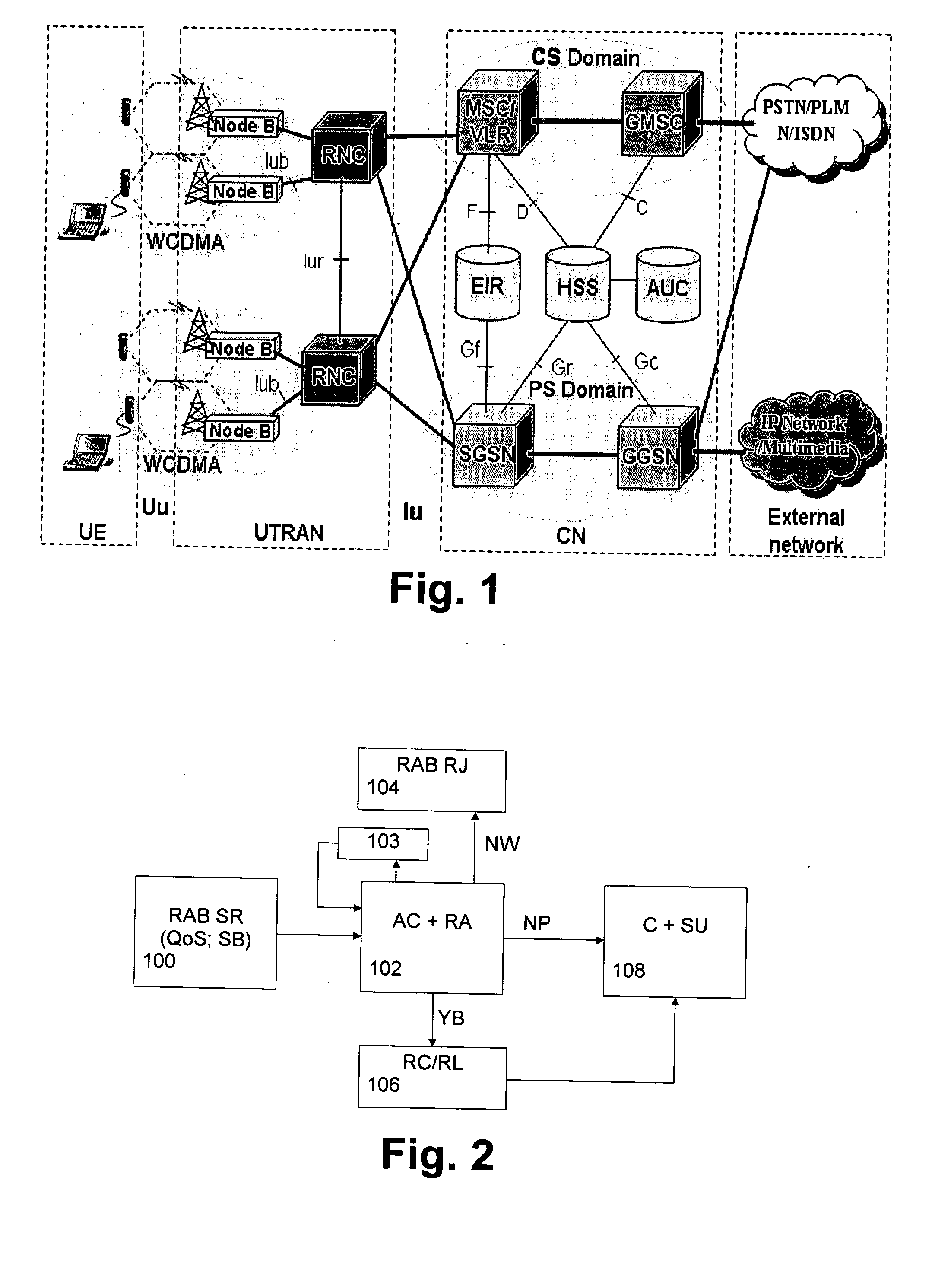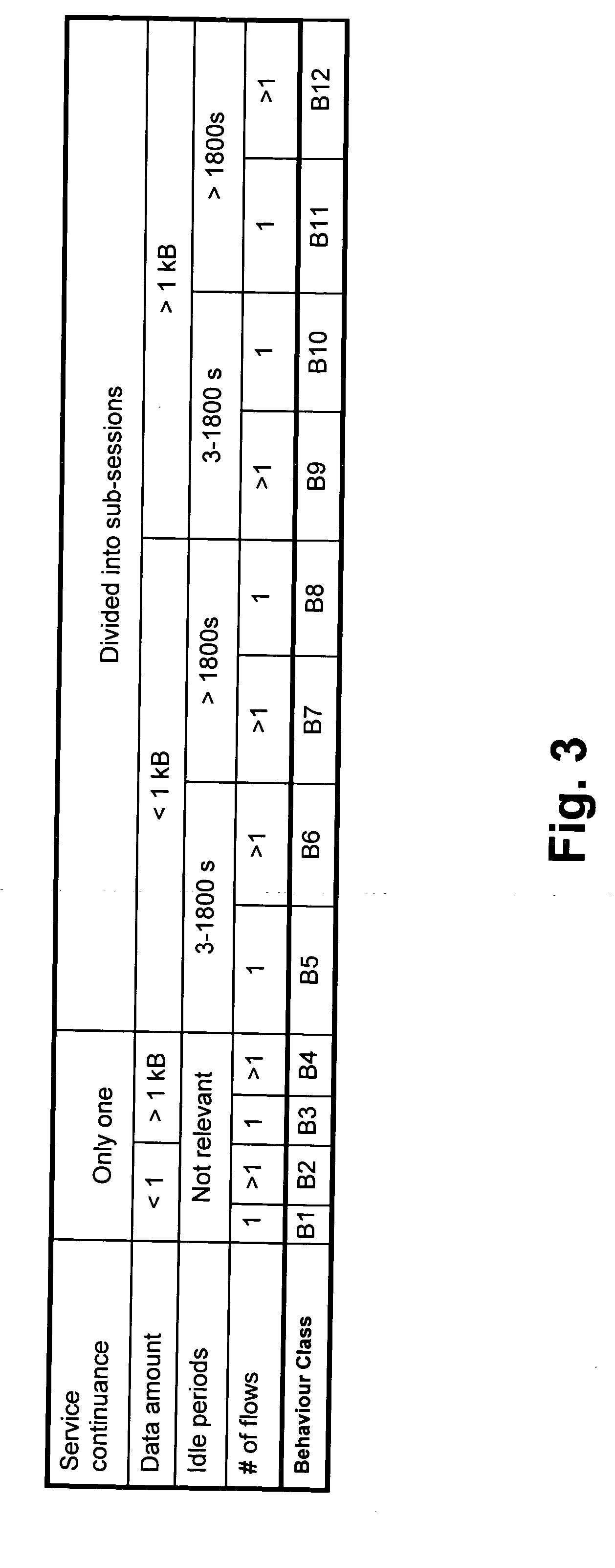Network optimization based on service behavior
a network optimization and service behavior technology, applied in the field of network optimization based on service behavior, can solve the problems of inability to take into account the behavior of the service and the subscribers using the service in the implementation of the rnc, the inability the inability to judge the capacity of the rnc to support different service mixes, etc., to achieve the effect of reducing the weight of one service, facilitating handling and increasing the weight of another
- Summary
- Abstract
- Description
- Claims
- Application Information
AI Technical Summary
Benefits of technology
Problems solved by technology
Method used
Image
Examples
Embodiment Construction
[0039] The preferred embodiments will now be described on the basis of a bearer establishment procedure in a UMTS network architecture as shown in FIG. 1.
[0040] To optimize the usage of radio interfaces, UTRAN resources are established and released on a demand basis. According to the preferred embodiment, besides the current traffic classes (conversational, streaming, interactive, background) and QoS parameters, demand are based on new classes which describe the behavior of the services during their lifetime. These classes could be categorized e.g. as service behavior classes.
[0041] The use of the service behavior classes means that each service is evaluated and categorized into a specific service behavior class which may represent, e.g., a certain type of parameter set in the RNC. The used parameter set may be based on the behavior of the RNC in different situations. When the parameter set is known, also the load and capacity requirements for the system in the UTRAN and in the RN...
PUM
 Login to View More
Login to View More Abstract
Description
Claims
Application Information
 Login to View More
Login to View More - R&D
- Intellectual Property
- Life Sciences
- Materials
- Tech Scout
- Unparalleled Data Quality
- Higher Quality Content
- 60% Fewer Hallucinations
Browse by: Latest US Patents, China's latest patents, Technical Efficacy Thesaurus, Application Domain, Technology Topic, Popular Technical Reports.
© 2025 PatSnap. All rights reserved.Legal|Privacy policy|Modern Slavery Act Transparency Statement|Sitemap|About US| Contact US: help@patsnap.com



